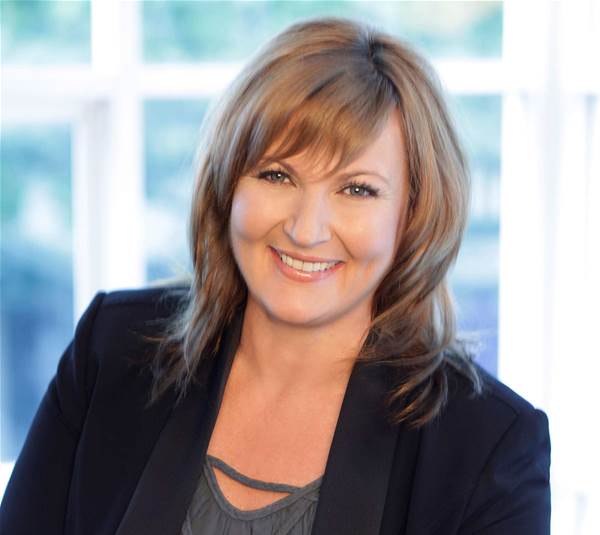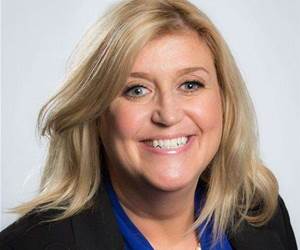When does an insurance company turn into a software vendor?
Carole Tokody - Cover-More Group

The lines are blurring for ASX-listed Cover-More Group.
How close is the day when members of what we know as the financial services sector turn around and realise they are no longer selling financial services, they're selling software?
There is no doubt digital savvy and fortified core banking infrastructure is fundamental to what the financial giants take to the market today. No less is this the case in the insurance sector.
ASX-listed travel insurance company Cover-More Group claims to have 40 percent of the Australian market in traveller premiums sewn up.
In the 2014 financial year, Cover-More earnt $154 million from its travel insurance products, bolstered by $65 million from its medical assistance business - it employs 280 health professionals based in Brisbane, Sydney, Shanghai and Kuala Lumpur to assist partner policyholders.
The majority of its policy sales still come out of partnerships with the traditional travel agent network - the Harvey World Travels and Flight Centres.
But growth in its travel insurance sales rests with integrating its policy sales engine into the booking systems of airlines like Air New Zealand and Malaysia Airlines, plus selling through other intermediaries like Medibank and Australia Post.
Today, if you book a flight to Christchurch on New Zealand's national carrier, Cover-More will automatically calculate your premium and push you an insurance offer before you get to the payments checkout.
All it requires is a ticked box and some details between the name and address form and the payments gateway.
This is enabled by a piece of proprietary software called Impulse.
Impulse is, at its core, an analytics engine that hooks into the e-commerce platforms of Cover-More’s partners through an API.
It collects a feed of traveller data from the partner booking platform and crunches this in real time through “optimisation algorithms” to push back to the customer a tailored premium designed to deliver the best possible chance they will opt in.
Cover-More’s sales chief Carole Tokody told iTnews Impulse uses travel dates, the number of travellers booking together, relative risk levels of destinations, classes of travel and a “host of other factors” to calculate a personalised offer for each customer.
“We have thrown out the old playbook of travel insurance marketing and sales and led the charge into a fully interactive and engaged model of customer-aware marketing,” she said.
Cover-More is by no means the only insurance operator taking its product direct to customers within an airline ticketing booking platform. Qantas has integrated QBE travel policies into its flight checkout, and Virgin Australia does the same with Allianz.
The difference between Cover-More and these global insurance monoliths is Cover-More doesn’t really supply the insurance either.
The company's model outsources that level of risk to a series of underwriters, leaving it with the task of selling the policies and processing the claims - meaning it also isn’t regulated by APRA.
Does that mean what Cover-More is really selling is analytics-driven software with a side serve of administration?
Tokody is not so keen on the label.
“Technology is only a portion of the value chain we deliver ... Not only do we deliver medical assistance to our partner’s customers in their time of need, Cover-More manages other equally important services such as claims, product development, pricing and optimisation," she said.
“Having a number of underwriters globally does not distract from the fact that Cover-More is a specialist in managing global travel insurance portfolios including the most appropriate underwriting partner."
Talking the software talk
This doesn’t stop Tokody from taking several notes out of the software executive’s manual to pitch her wares, however.
She says one of the characteristics that sets Impulse apart from what other insurers have to offer is its speed of processing and integration.
The platform utilises the RESTful API and JSON data standard - where, she says, her competitors are stuck on SOAP and XML - and offers better integration times: partners opting into Impulse experience average integration times of three and a half weeks, she said.
Embedding the service into a partner platform involves syncing up a number of system calls: the platform needs to open an authenticated dialogue with Impulse, send through the traveller data, and let the Impulse back-end know whether the customer has accepted the offer before closing the session.
“These server side calls are modelled quickly and most partners can have a working model up within the first few days," Tokody said.
"The bulk of the time within integration is end-to-end testing of the system to ensure no conflicts with the partners’ systems and also the handling of back office reconciliation. The development effort itself is minimal.”
Disruptor?
With this technology at the core of Cover-More’s future, Tokody is likely justified in arguing the insurer is “not so much exposed as involved” in digital disruption. She says the three-decade old business is “respectful of our legacy” but “not controlled by it”.
“That allows us to look at leading-edge methods and technologies rather than being shackled by older systems."
Not all legacies are unhelpful, however. Cover-More’s history has left it with 30 years worth of data on Australian and international travel habits.
“Having migratory perspective of travel insurance trends over a 30 year perspective is of course useful from an actuarial perspective, however, it’s now the marriage of real-time travel analytics married to this historical data that provides deep opportunity," Tokody said.
Cover-More is also not afraid to get its hands dirty in the telco space, partnering with United Global SIM to bring its customers an in-house branded ‘global SIM’ bundled into their policy, which serves the dual purpose of protecting policyholders from global roaming charges while also keeping them conveniently close to hand if their insurer needs to get in touch.
“Location and messaging services underpin this conversation and recently during the tragedy of the earthquakes in Nepal, Cover-More was able to proactively reach distressed customers and usher them to a join a chartered air bus that we had sent to the region for evacuation purposes,” Tokody said.
The company's approach appears to be working.
In its last half year results, Cover-More reported significant revenue and profit increases despite a weakening Australian dollar and a softer outbound travel market.
It plans to continue the push of its services, including Impulse, into Asia in order to future-proof and diversify its market.

